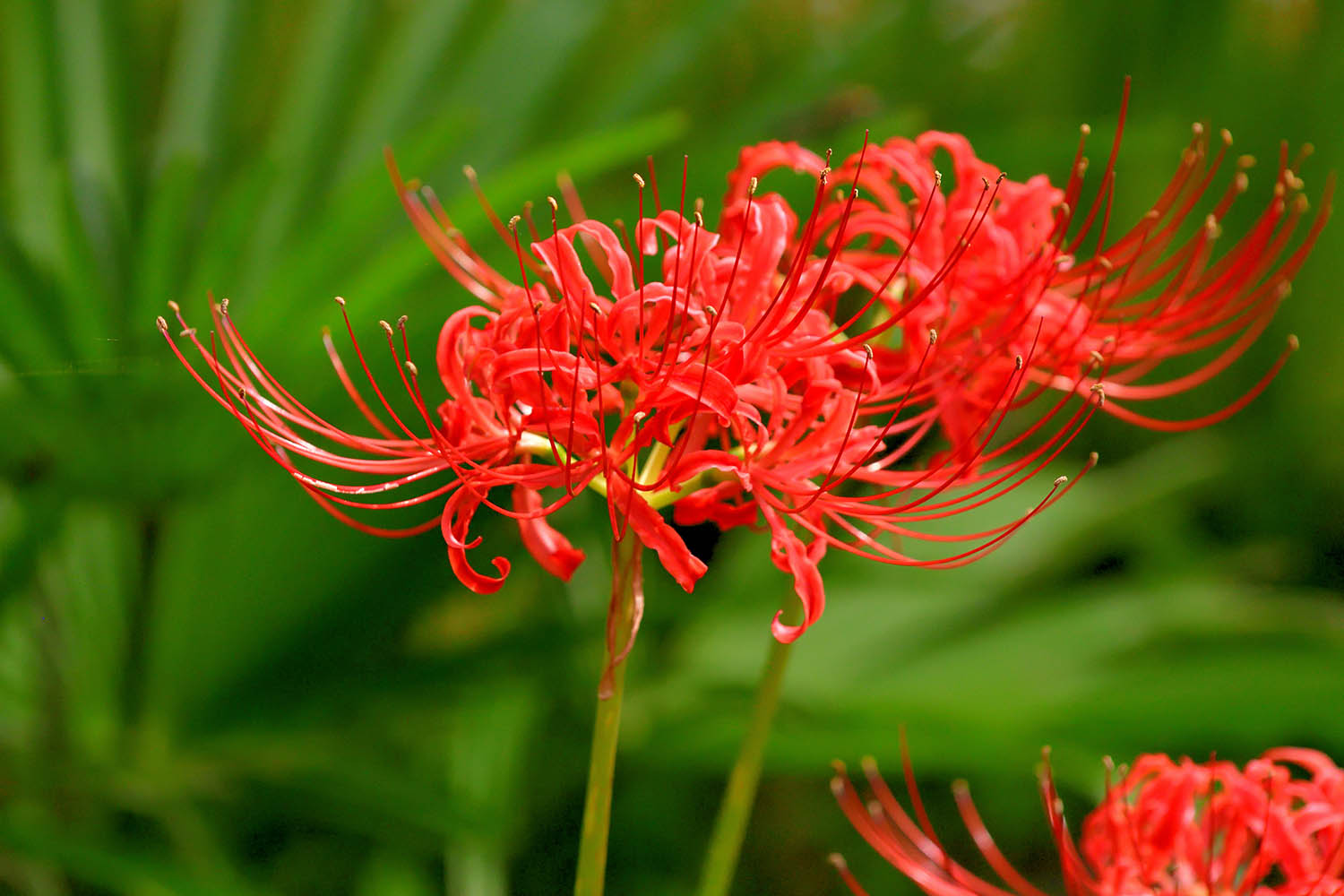By MIKE RALEY WPTF Weekend Gardener
Every regular co-host on the WPTF Weekend Gardener has discussed with delight, at one time or another, the attributes of the “naked lady” spider lily or Lycoris radiate. I have read that the name “Lycorus” refers to the mistress of the Roman leader Mark Anthony. Of course, there are other names for this popular bulb: “Cluster amaryllis”, “Equinox flower”, “Hurricane lilies”, “Magic lily”, “Resurrection lily”, and “Surprise lily”. Yes, this extraordinary perennial bulb is in the amaryllis family and is a native of China, Korea and Japan, but there are varieties that are native to the southeastern U.S. including North Carolina. “Coastal Spiderlily” and “Hammock Spiderlily” have that distinction. All of the above grow well in central and eastern North Carolina. They are a little iffy in the mountains since they don’t particularly like cold weather and would work better there in containers that can be moved indoors.
Unfortunately, I rarely see spider lilies planted in landscapes on my neighborhood walks or in other locations. Just here and there. This is a shame since they are such old fashion bulbs that you might find still popping up at your grandparents’ property in August and September. More of us need to plant them. They make great pass-along plants. Our “Weekend Gardener friend Steve from Garner shared some with listeners and me at a remote. I think they look best in a perennial border with ground covers, annuals or other perennials.
Why are they called naked ladies and where does the surprise come in? Spider lilies just pop up out of the ground with the red or pink funny looking, spider-like bloom perched on top. Just sitting up there without any leaves to speak of. The narrow leaves are more noticeable when the flowers fade. The foliage hangs around into early winter. The hurricane name comes from their propensity to bloom during hurricane season.
Spider lilies grow best in full sun to part shade and prefer soil that is well draining. Use a good organic matter mixed into whatever kind of soil you have in your landscape. Don’t plant them too deeply, about 4 to 6 inches. The top or neck of the bulb should be near the surface of the soil. They will naturalize through underground bulb off-shoots. Planting them in late summer to early fall seems to work best, using a couple of inches of mulch might help no matter where you plant them. Divide these bulbs just after blooming. They multiply every year if they are content. Dividing also prevents overcrowding.
Fertilize in spring with a balanced slow-release nitrogen. Don’t overdo it. We tend to over fertilize and over water our plants, especially when they are newly planted.
Drought doesn’t seem to bother spider lilies. The folks at NC State tell me some spider lily varieties are not deer or rabbit friendly because of chemicals they contain. The same can’t be said for voles however. They love chomping on bulbs of all kinds.
I focused on the “naked lady spider lilies” because they are, well, different. There are all kinds of extraordinary, colorful spider lily varieties and cultivars. We mentioned a few above. Check with Campbell Road Nursery or Logan’s if you are in Raleigh. Shop local nurseries if you can, and also check some of your favorite catalogs for some of these fun flowering bulbs.
